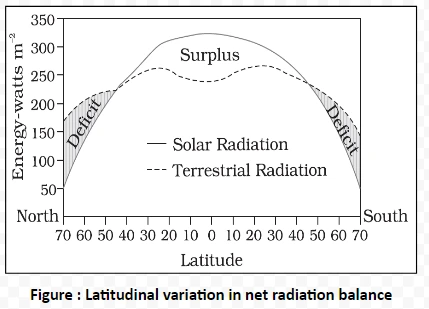![]() 30 Nov 2023
30 Nov 2023
The earth maintains a constant temperature by ensuring the heat it receives (Solar Insolation) equals the heat it emits (terrestrial radiation). Thus earth as a whole neither accumulates nor loses heat, hence it maintains its temperature.
The heat budget, or the balance between incoming and outgoing radiation, is crucial for maintaining the Earth’s overall temperature and climate stability. It illustrates the delicate balance of energy exchanges that occur within the Earth’s atmosphere and at its surface.


Temperature and heat are closely related but distinct concepts resulting from the interaction of Solar Insolation with our atmosphere and Earth’s surface. Specifically:
In simpler terms, while heat delves into the energy and motion of particles, temperature provides a tangible measure of an object’s warmth or coldness.

Factors Controlling Temperature Distribution
The temperature at any location is not just a random number. It’s influenced by a combination of geographical and atmospheric elements. Here’s a breakdown of factors influencing temperature distribution:
<div class="new-fform">
</div>